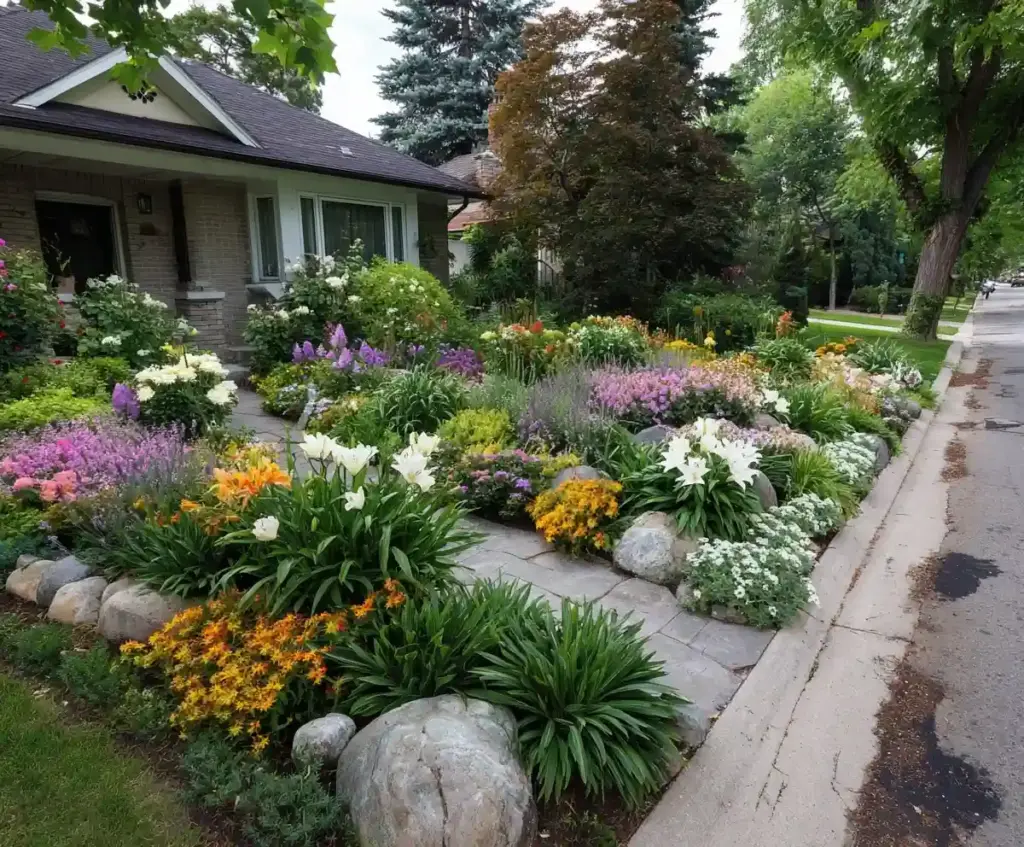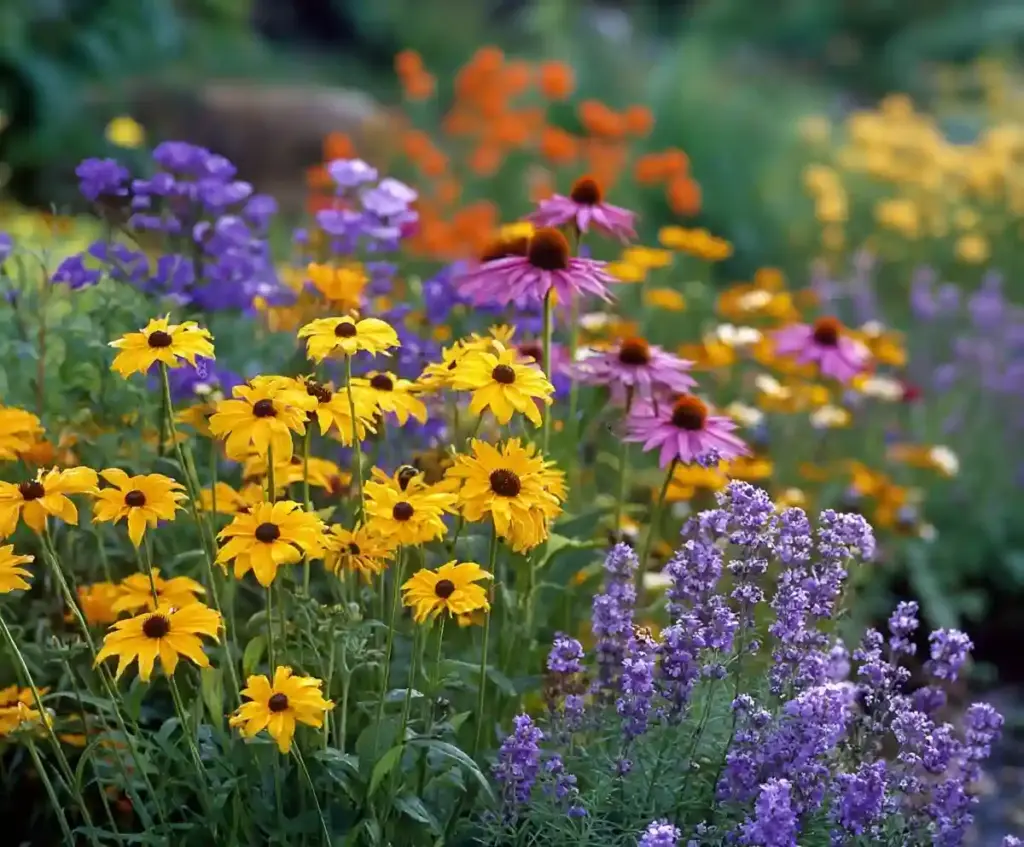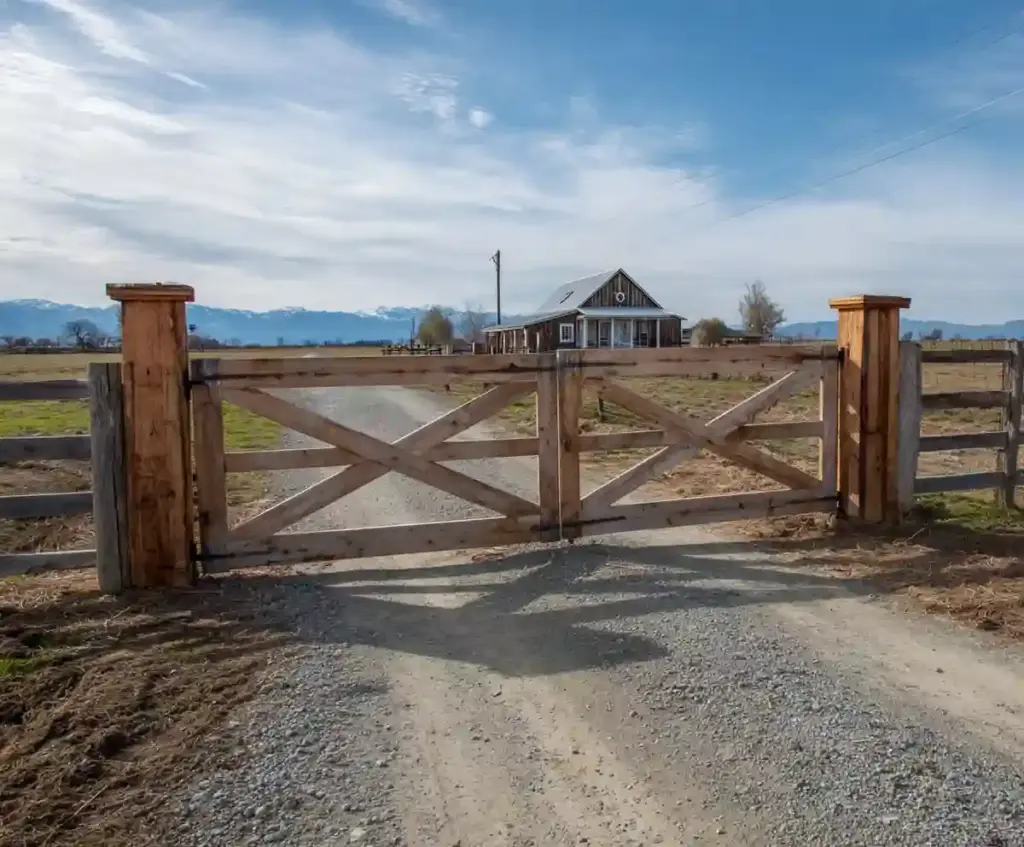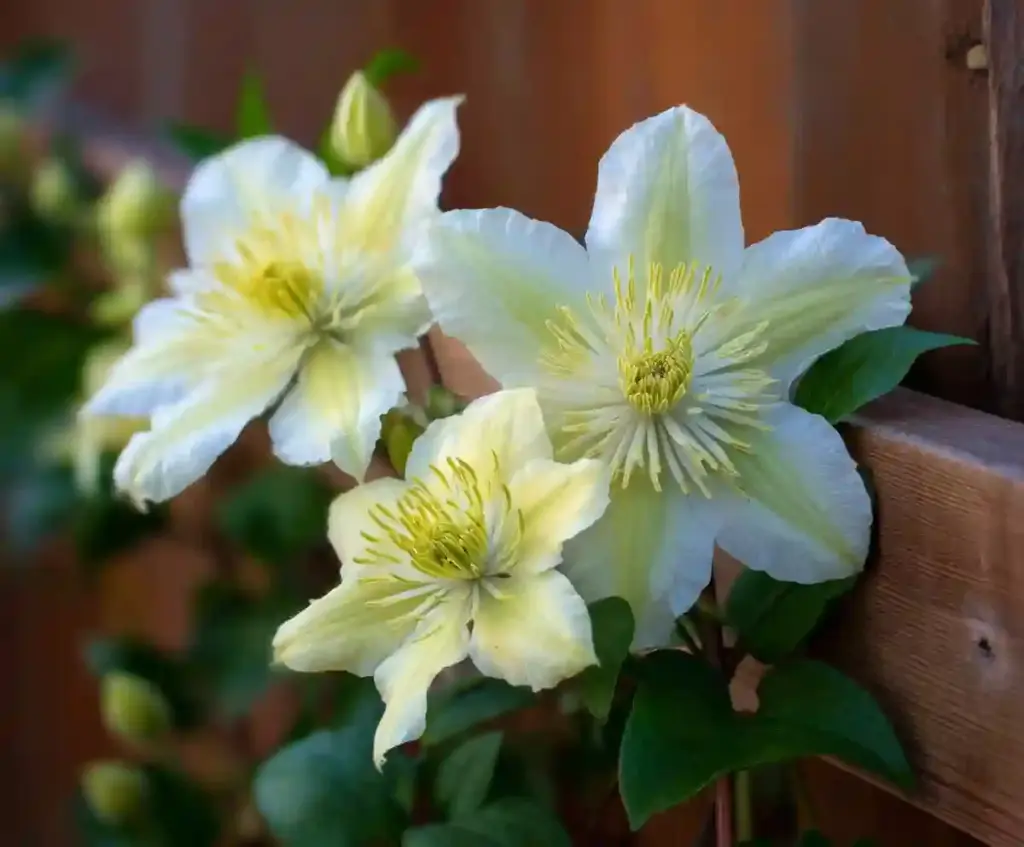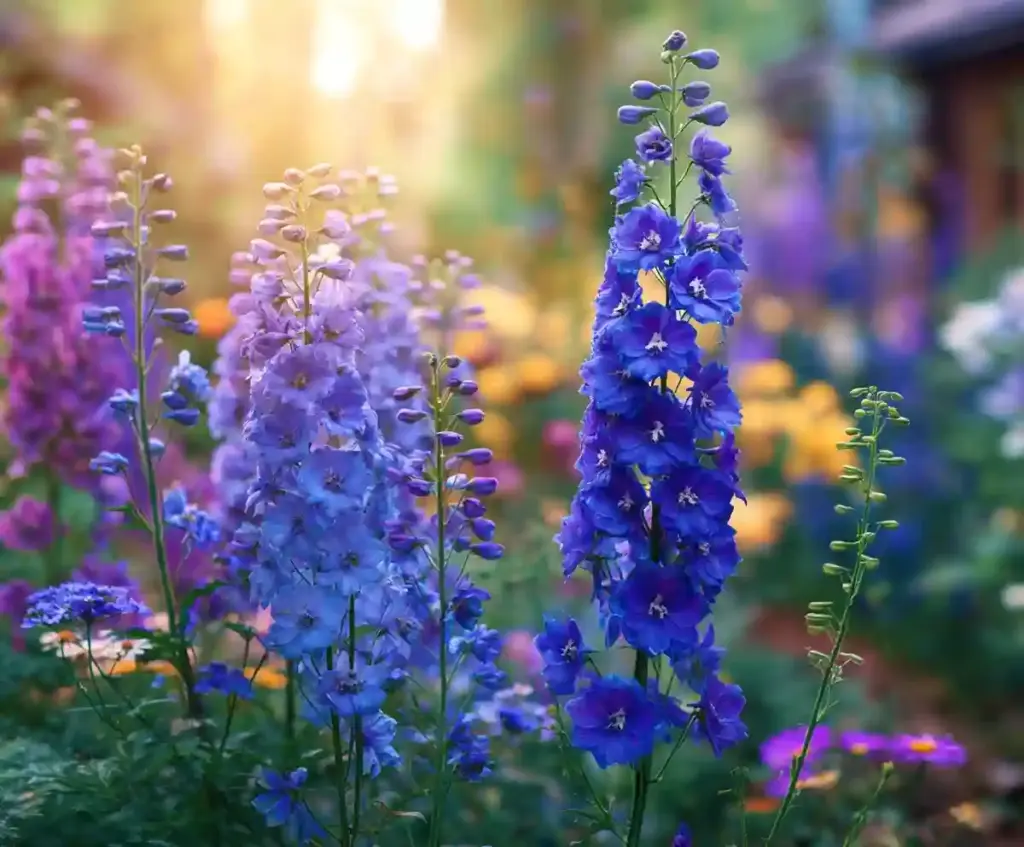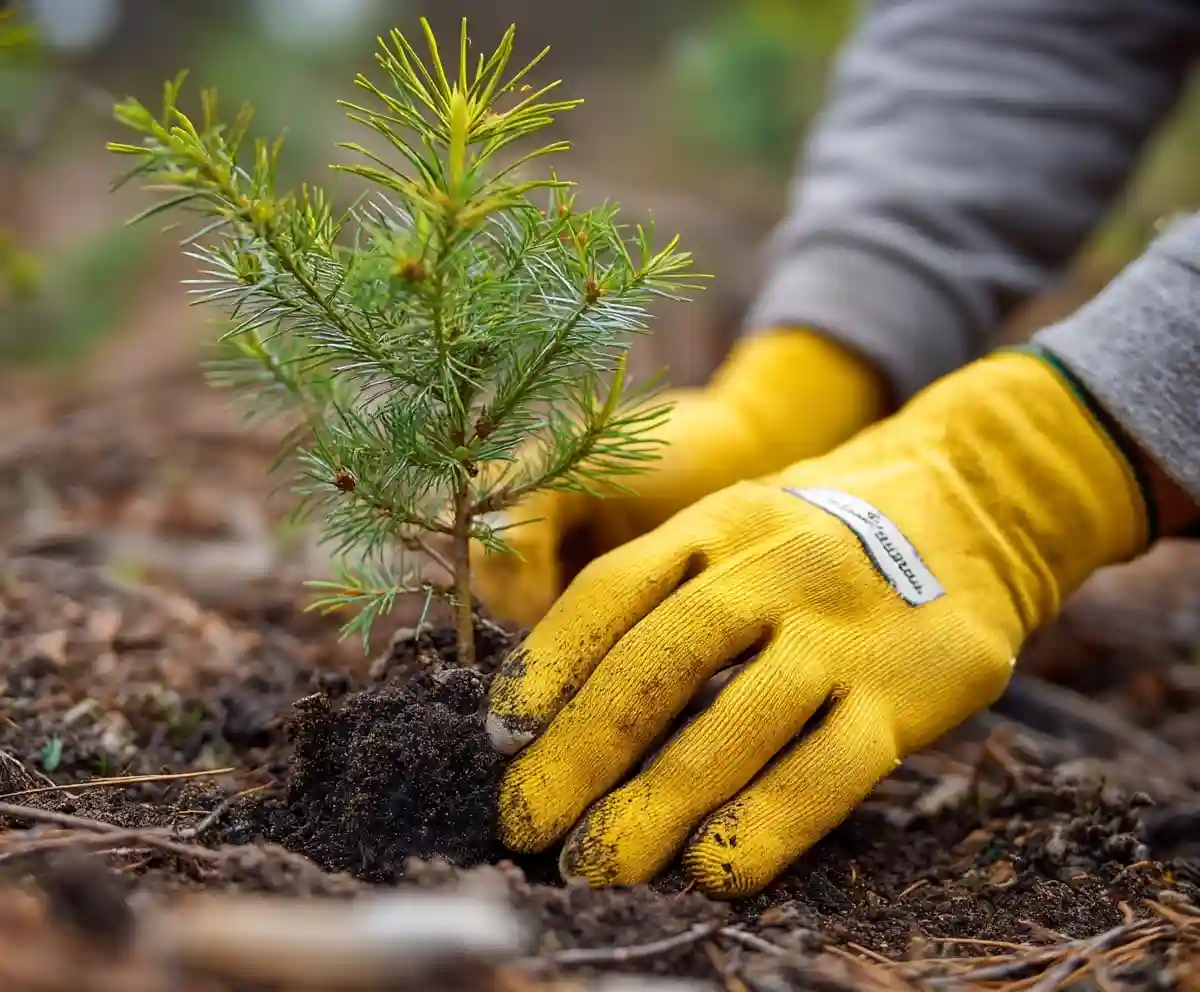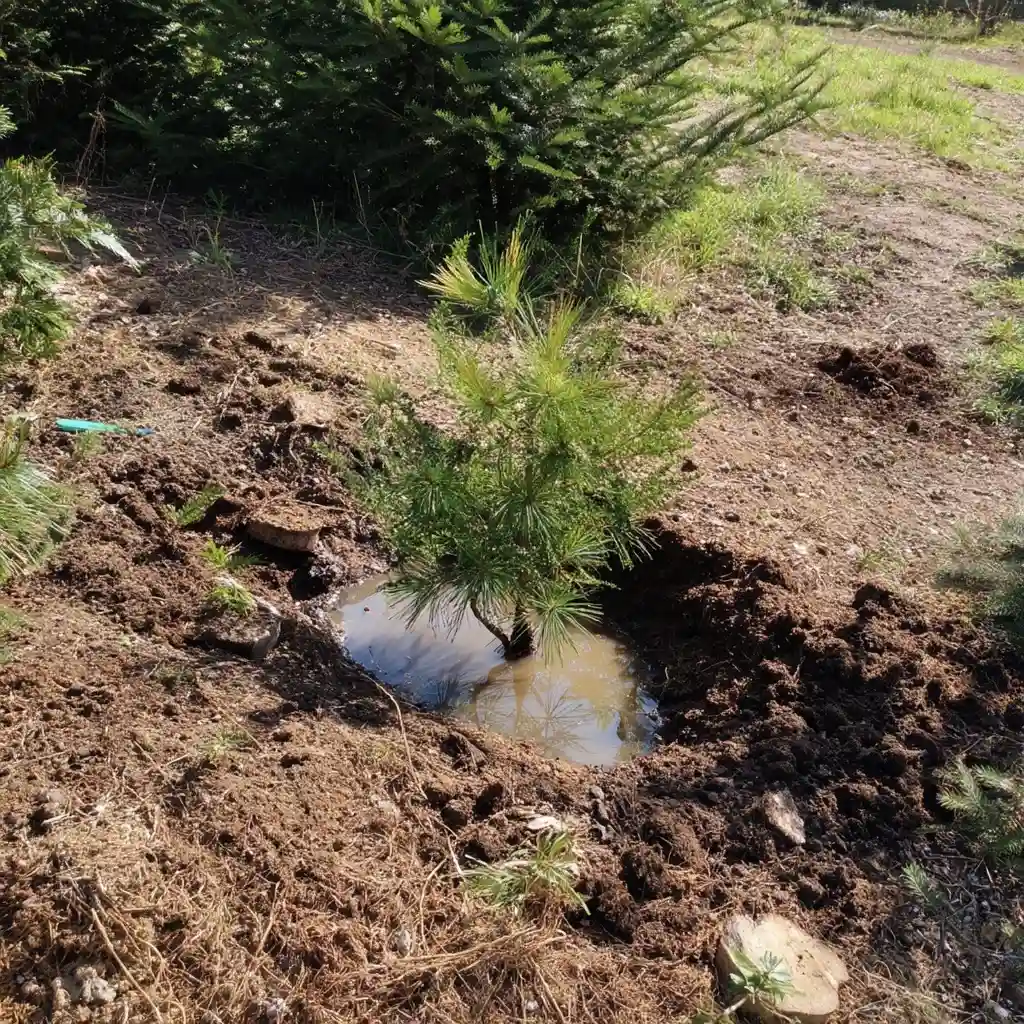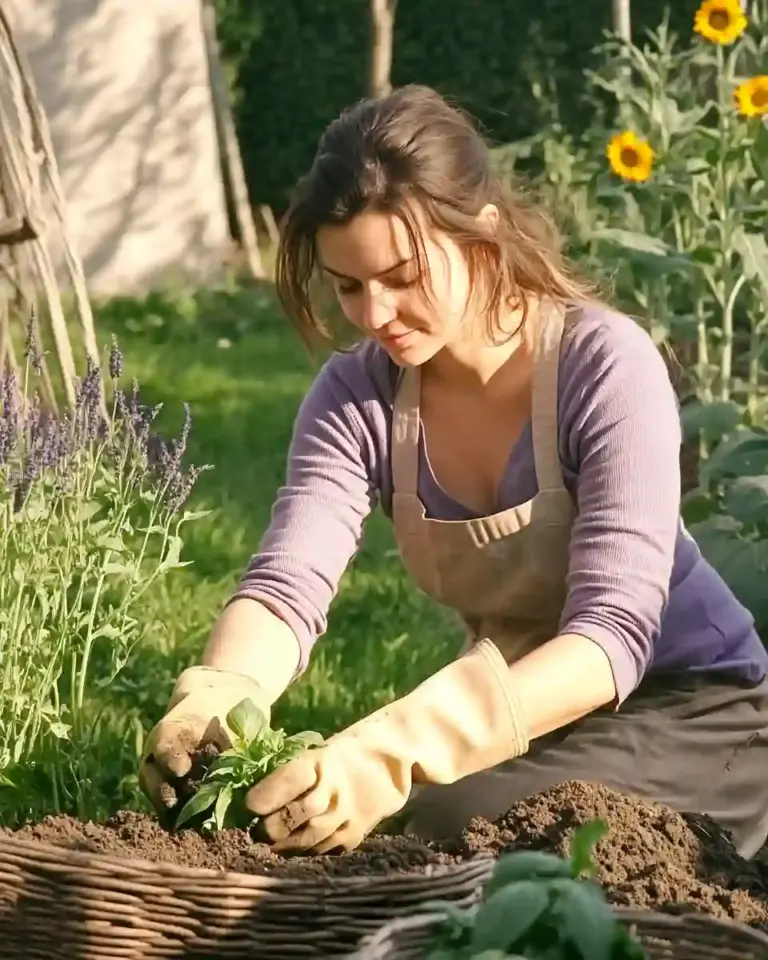Caring for pine trees starts with smart planting choices that make your job easier down the road. When you begin with the right location and soil conditions, you set your pine up for a lifetime of low-maintenance beauty. Pine trees are remarkably self-sufficient when planted properly—they can thrive for decades with minimal intervention.
The trick is to mimic their natural environment. Think sun-drenched slopes, soil that drains easily, and enough room for roots to spread deep and wide. Do it right in the beginning, and your pine tree will reward you by needing very little from you as it matures.
Table of Contents
🌤️ How to Grow Your Own Pine Trees – Site, Sun, Soil & Drainage Test
The foundation of caring for pine trees begins with planting in the right environment. Pine trees are tough, but they won’t tolerate soggy roots or constant shade. Choosing the proper site now prevents many headaches later.
🌞 Sunlight
Pine trees crave full sun. Aim for a spot that gets at least 6 hours of direct sunlight daily. Trees grown in shade tend to become leggy, weak, and more prone to disease.
🌱 Soil & Drainage
Healthy pine trees need well-draining soil. While they tolerate various soil types, they struggle in compacted or soggy ground.
Simple Drainage Test:
- Dig a 12-inch-deep hole.
- Fill it with water.
- Check back after 12 hours. If there’s still water, drainage is poor.
If your soil drains poorly:
- Mix in organic compost or sand to loosen heavy clay.
- Consider raised beds or mounds for better drainage.
🪨 Space & Roots
Pines grow both tall and wide. Leave plenty of room between trees and buildings. For larger varieties like white pines, plant at least 20–30 feet away from structures to avoid root or branch interference.
By choosing the right site and ensuring solid drainage and sun exposure, you’ll minimize problems and maximize growth.
💧 Watering & Mulching After Planting
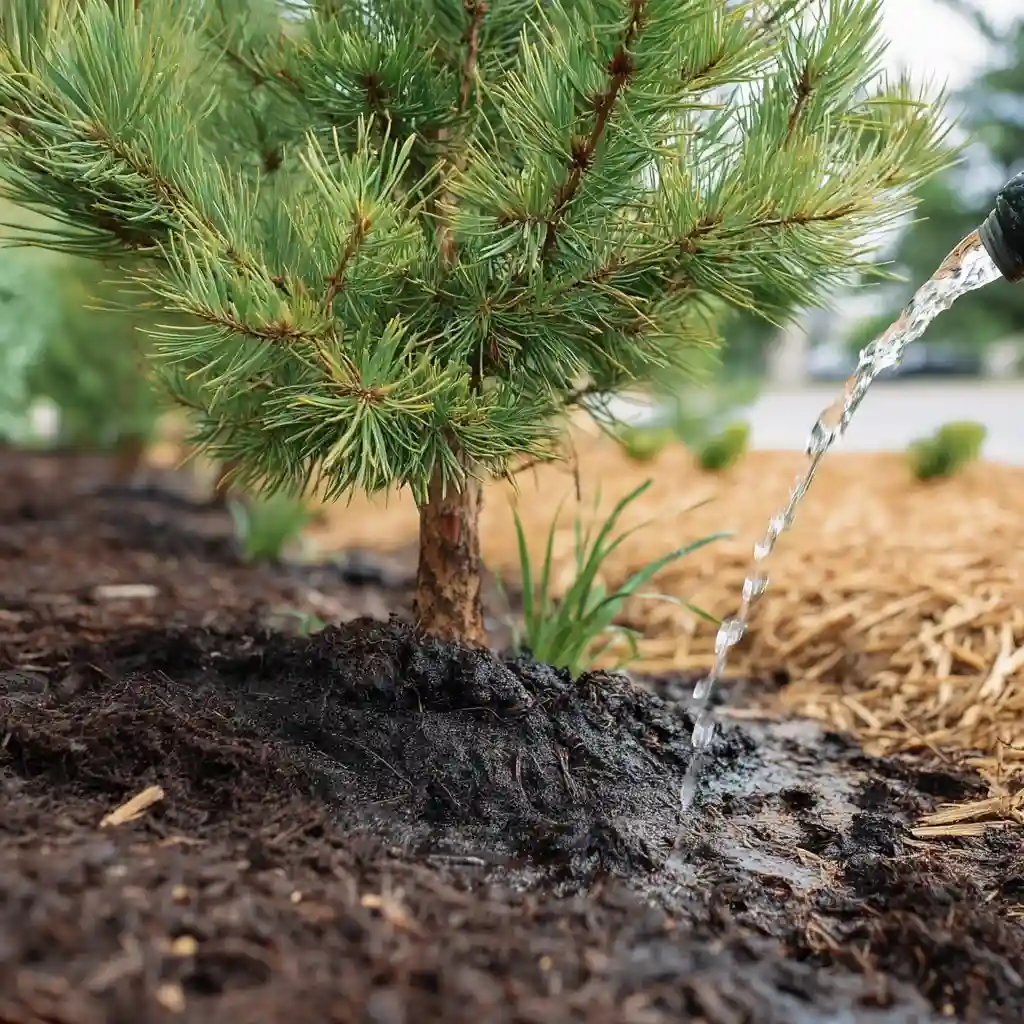
Proper watering and mulching are key steps in caring for pine trees—especially during the first year after planting. These early practices help your tree establish deep roots and build resilience to drought and disease.
💦 Watering Schedule
Newly planted pine trees require consistent moisture, but avoid overwatering.
- First month: Water every 2–3 days, keeping the soil moist but not soggy.
- Next 2–3 months: Water once a week if there’s no rainfall.
- After year one: Established pines usually need watering only during extended dry spells.
Stick your finger a few inches into the soil. If it feels dry, it’s time to water. If it’s damp, hold off.
🌾 Mulching Tips
Mulch helps retain moisture, suppress weeds, and protect roots from temperature swings.
Best practices:
- Use 2–3 inches of organic mulch (pine bark, shredded leaves, or wood chips).
- Keep mulch 2–3 inches away from the trunk to prevent rot and pests.
- Refresh mulch annually in spring.
A well-mulched and appropriately watered pine has a much better chance of thriving with minimal fuss later.
🌿 Fertilizing (Usually Minimal)
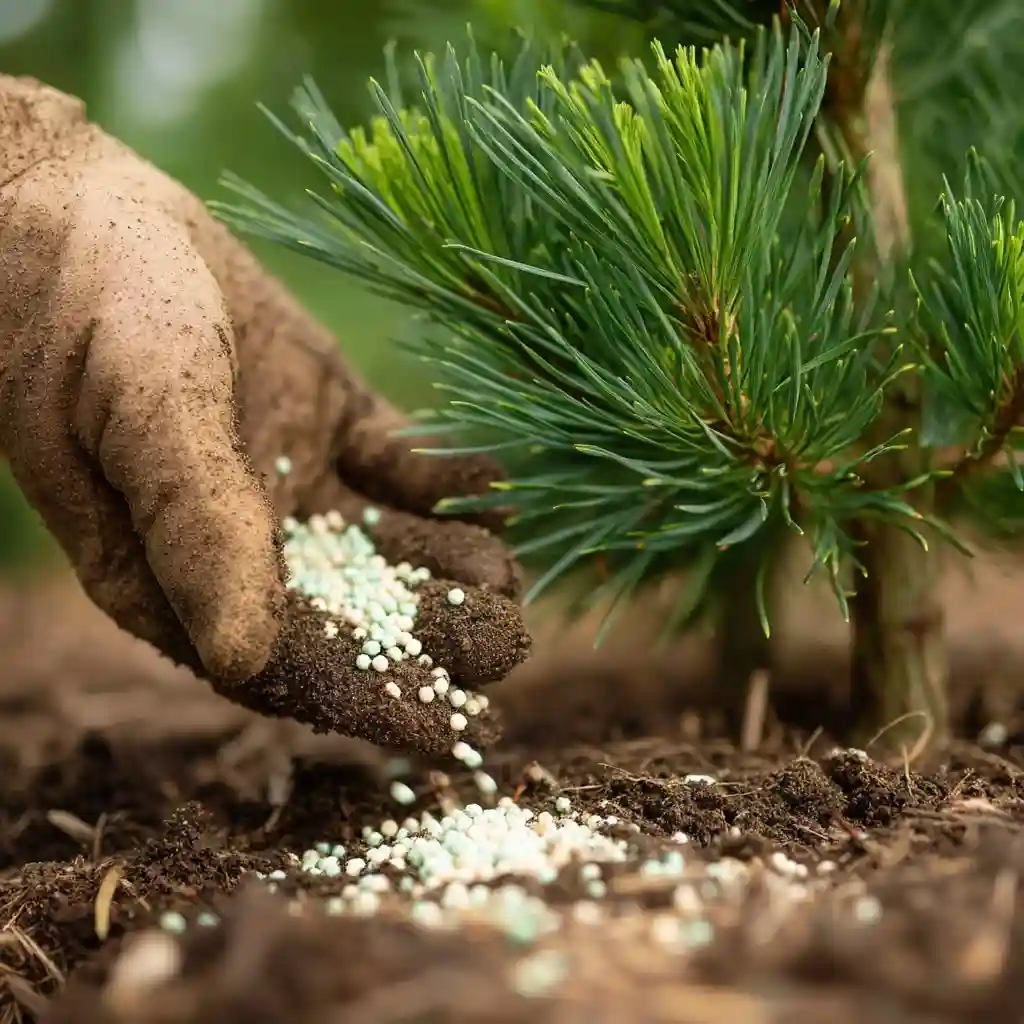
One of the biggest advantages of caring for pine trees is that they don’t require heavy feeding. In fact, too much fertilizer can do more harm than good. Pines are naturally adapted to grow in nutrient-poor soils, so a “less is more” approach works best.
When to Fertilize
- Skip the first year after planting. The roots need time to settle without the stress of forced growth.
- Begin fertilizing in year two, only if the tree shows signs of poor growth (yellowing needles, sparse foliage).
- Best time to fertilize is early spring, just before new growth begins.
How Much to Use
Use a balanced, slow-release fertilizer (like 10-10-10). Apply:
- 2–4 pounds per 100 square feet of soil surface for young trees.
- In later years, use 2 pounds per inch of trunk diameter, every other year.
Spread fertilizer evenly under the canopy and water it in deeply. Never pile fertilizer at the base—it can burn the trunk or roots.
Pines thrive with minimal fertilization, and overfeeding can lead to overly fast, weak growth. Keeping it simple ensures long-term health.
✂️ Pruning & Shaping Young Pines (Build a Strong Leader)
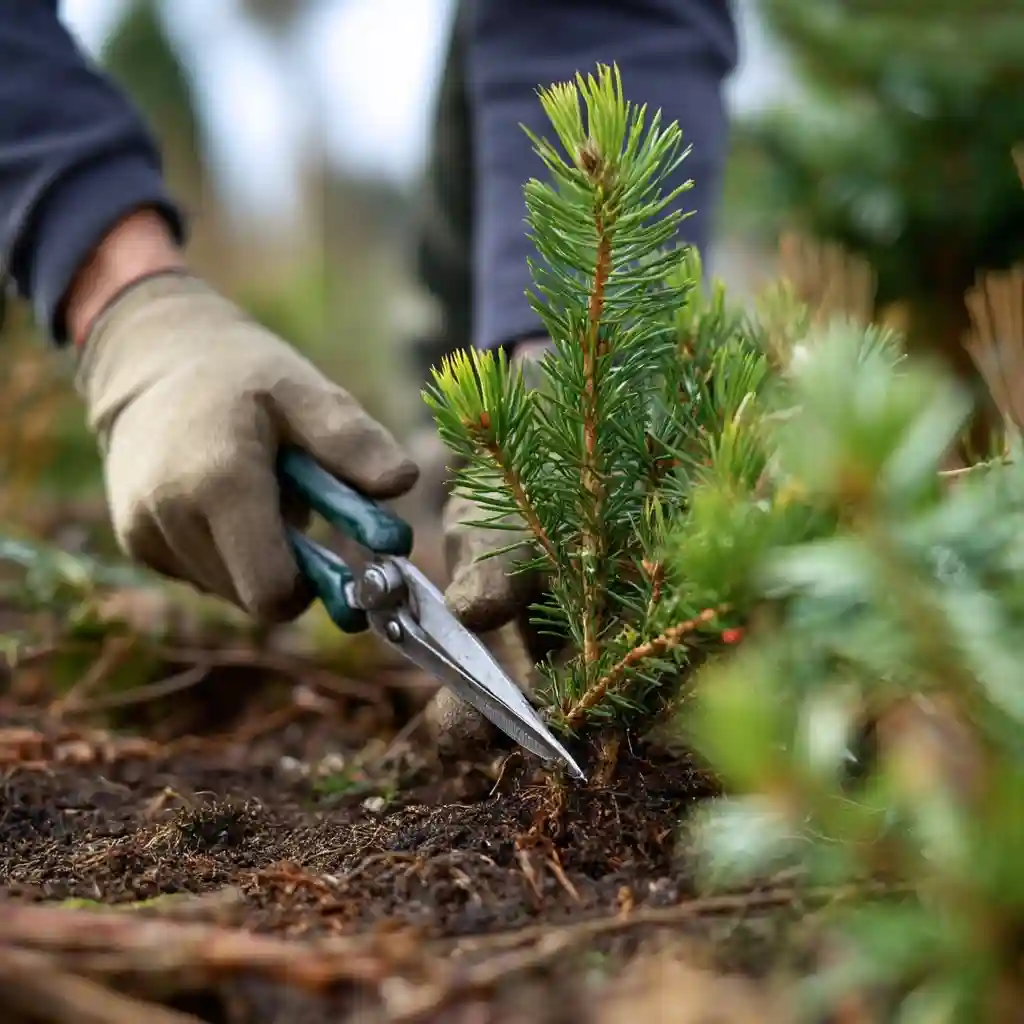
When it comes to caring for pine trees, pruning is more about shaping than constant trimming. Pines naturally form a strong central trunk—or “leader”—but early training helps ensure stability and balanced growth for years to come.
Why Pruning Matters
- Encourages a single, dominant leader to prevent weak, forked tops.
- Promotes better airflow and sunlight penetration.
- Prevents future structural problems and storm damage.
Best Time to Prune
- Prune in late winter to early spring, before new growth starts.
- Avoid pruning in fall, as it may invite disease and winter damage.
How to Shape Young Pines
- Choose one central leader. If two tops are competing, snip off the weaker one.
- Remove only small, lower branches if needed for clearance or shape.
- Do not shear pine trees like hedges—they don’t regrow from old wood.
- For denser growth, pinch back one-third of new candles (the soft spring shoots) to encourage bushier branching.
Avoid aggressive cuts. Pines are not like maples or shrubs—you can’t correct over-pruning easily. Focus on light shaping and training during the first few years.
🚨 Common Problems: Poor Drainage, Over/Under-Watering, Browning Needles, Root Rot
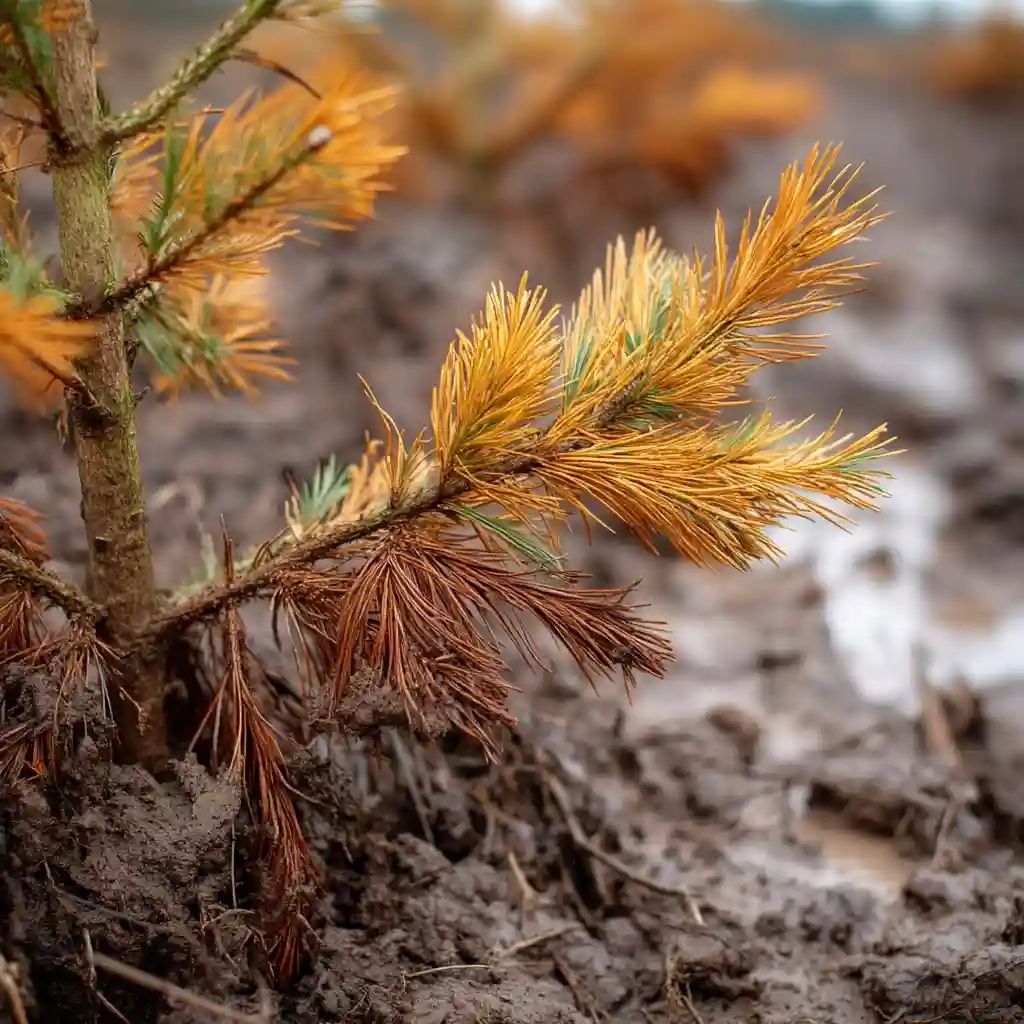
Even though caring for pine trees is fairly low-maintenance, certain problems can arise—especially in the first few years. Catching issues early can prevent long-term damage and help your tree thrive.
🌊 Poor Drainage
Pines hate “wet feet.” When roots sit in soggy soil:
- Growth slows or stops
- Needles may yellow and drop
- Root rot can set in
Fix it: Amend soil with sand or compost, or plant on a slight mound to improve runoff.
💦 Over- or Under-Watering
Watering mistakes are the most common issue for new pine owners.
Too much water:
- Causes yellowing needles
- Encourages fungal growth and root rot
Too little water:
- Results in browning tips
- Slows root development
Solution: Stick to a consistent watering schedule and adjust based on weather conditions. The soil should be moist, not muddy or bone dry.
🍂 Browning Needles
Not all browning is bad—pines naturally shed older needles. But excessive browning, especially at the tips, signals stress.
Causes may include:
- Drought
- Poor soil
- Nutrient deficiency
- Salt damage (from roads or fertilizers)
Check watering habits and soil quality first. If needed, send a soil sample to your local extension service for testing.
🦠 Root Rot
This fungal disease is often caused by poor drainage and overwatering. Symptoms include:
- Rapid needle browning
- Wilting
- Mushy roots
Prevention: Ensure excellent drainage and avoid frequent shallow watering. There’s no easy cure once root rot sets in—prevention is key.
🔧 Ongoing Maintenance Tips & When Pines Really Need Attention
Once established, caring for pine trees becomes mostly hands-off. However, a little seasonal attention helps keep your tree healthy, pest-free, and looking its best.
🌳 Seasonal Maintenance Checklist
Spring:
- Inspect for winter damage or broken limbs
- Apply mulch if needed, keeping it away from the trunk
- Lightly prune dead or weak branches
- Fertilize only if growth appears sluggish
Summer:
- Monitor soil moisture during dry spells
- Check for browning needles or insect activity (e.g., pine sawflies, borers)
- Deep water once every 2–3 weeks during droughts
Fall:
- Remove debris and fallen needles from around the base to deter pests
- Avoid pruning—wounds heal slowly in cooler temps
Winter:
- Protect young trees from heavy snow loads
- Watch for salt spray near roads—use burlap shields if needed
🚨 When Pines Need Extra Attention
Most pines thrive without fuss, but signs your tree needs a closer look include:
- Sudden yellowing or browning of large sections
- Slow or no new growth in spring
- Sticky sap on trunk or branches (can signal pests)
- Visible insect holes or sawdust-like material
If you’re unsure, contact a certified arborist or local extension office. Early intervention can often save a struggling pine.
Conclusion
Caring for pine trees doesn’t have to be complicated. When you start with the right site, soil, and sun, you’re already halfway to success. Add proper watering, minimal fertilization, and occasional pruning, and you’ll have a tree that thrives for decades with little interference.
❓ FAQ
How long do pine trees live?
Many pines live 100–200 years or more, depending on species and growing conditions.
Do pine trees need pruning every year?
No—only light shaping in the early years or to remove dead or damaged branches later.
Can I grow a pine tree from seed?
Yes! Start indoors or in a nursery bed. Transplant once the seedling reaches 6–12 inches tall.
What pests affect pine trees?
Common issues include pine sawflies, bark beetles, and borers. Keep the tree healthy to reduce risk.
Why are my pine needles turning brown?
Possible causes: natural needle drop, drought stress, poor soil, or overwatering. Check soil and root conditions.
🌿 Love gardening inspiration? Follow me on Pinterest for bold plant ideas, tips, and seasonal color!
More Posts

